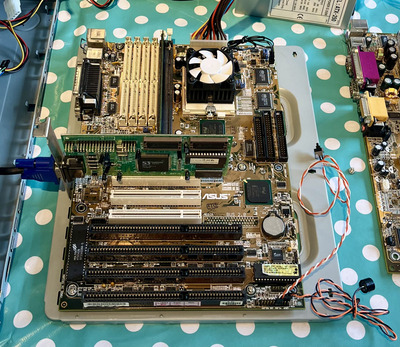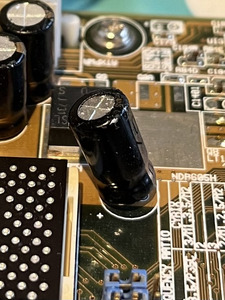The controller is an HIP6008, which seems to have been used on lots of other motherboards. However, 1.0V on L16 is way too low (assuming that this is actually Vcore - there's nothing else here that looks like it's capable of supplying that amount of current), so there's definitely a VRM problem. It sounds like the VRM is a common failure on these boards, but without a schematic, it will take some more time to figure out why Vcore is too low (unless someone else already figured it out). Some detailed close-up pictures of the corner of the board around the HIP6008 might help. Component markings aren't readable in the hw-museum.cz pictures, ans you appear to have an earlier revision without the VID3 jumper. I'm thinking that there are three options - Q2 is bad (unlikely), the output is overloaded (measure resistance from L16 to ground to verify), or something failed in the feedback/compensation components (connected to pins 7 and 8 of the HIP6008).
Based on those voltage measurements, Q8 really is a 3.3V regulator (actually slightly high at 3.6V, but that was common) instead of using the 3.3V rail from the power supply. It's just a FET and not the LT1084 marked on the silkscreen (my initial thought was that the board was designed for either, but the pinout is wrong for an LT1084 - input and output are swapped).
By the way, on these packages, pin 1 is the pin marked "gate" in the datasheet:
https://www.mouser.com/datasheet/2/308/rfd3055sm-1196049.pdf



